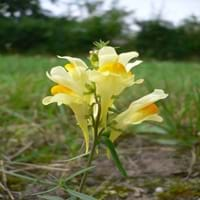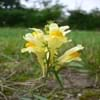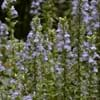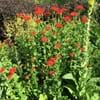Life Span
Perennial
Perennial
Origin
Europe
North America, Canada, Mexico
Types
Linaria purpurea, Linaria maroccana, Linaria dalmatica
Panicum abscissum, Panicum acostia, Panicum amarum
Habitat
Dappled Shade, hedge rows, Shady Edge, Sunny Edge, Woodland Garden
Prairies
USDA Hardiness Zone
2-9
4-9
Sunset Zone
Not Available
1a, 1b, 2a, 2b, 3a, 3b, 4, 5, 6, 7, 8, 9, 10, 11, 14, 15, 16, 17, 18, 19, 20, 21, 22, 23
Habit
Spreading
Upright/Erect
Flower Color
Yellow, Orange, Light Yellow, Ivory
Green
Flower Color Modifier
Bicolor
Bicolor
Fruit Color
Green, Tan
Not Available
Leaf Color in Spring
Light Green
Green, Light Green, Blue Green, Gray Green
Leaf Color in Summer
Light Green
Light Green
Leaf Color in Fall
Light Green
Red, Green, Orange, Blue Green, Gray Green, Bronze
Leaf Color in Winter
Light Green
Tan, Sandy Brown
Leaf Shape
Simple lobed or unlobed
Grass like
Plant Season
Spring, Summer, Fall
Spring, Summer, Fall, Winter
Sunlight
Full Sun
Full Sun, Partial Sun
Type of Soil
Loam, Sand
Clay, Loam, Sand
The pH of Soil
Acidic, Neutral, Alkaline
Acidic, Neutral, Alkaline
Soil Drainage
Well drained
Average
Bloom Time
Late Spring, Early Summer, Summer, Late Summer, Early Fall
Early Summer, Summer, Late Summer
Tolerances
Drought
Pollution, Soil Compaction
Where to Plant?
Ground
Ground
How to Plant?
Divison, Seedlings
Divison, Root Division
Plant Maintenance
Medium
Medium
Watering Requirements
Average Water Needs, Do Not over Water, Requires regular watering
Average Water Needs, Do Not over Water, Requires regular watering
In Summer
Lots of watering
Lots of watering
In Spring
Moderate
Moderate
In Winter
Average Water
Average Water
Soil pH
Acidic, Neutral, Alkaline
Acidic, Neutral, Alkaline
Soil Type
Loam, Sand
Clay, Loam, Sand
Soil Drainage Capacity
Well drained
Average
Sun Exposure
Full Sun
Full Sun, Partial Sun
Pruning
Remove damaged leaves, Remove dead branches, Remove dead leaves
Prune in spring, Remove dead or diseased plant parts, Remove deadheads
Fertilizers
All-Purpose Liquid Fertilizer
Nitrogen
Pests and Diseases
Red blotch
Red blotch
Plant Tolerance
Drought
Pollution, Soil Compaction
Flower Petal Number
Single
Single
Foliage Texture
Fine
Fine
Foliage Sheen
Matte
Matte
Attracts
Wildlife
Birds, Wildlife
Allergy
Toxic
Not Available
Aesthetic Uses
Showy Purposes
Showy Purposes
Beauty Benefits
Good for skin, Skin Problems
Not Available
Edible Uses
Yes
Insignificant
Environmental Uses
Air purification
Air purification, Provides ground cover, soil erosion prevension on hill slopes
Medicinal Uses
Antiphlogistic, Astringent, Boils, cathartic, Diuretic, Enteritis, Hepatic, Homeopathy, Jaundice, Liver problems, Ophthalmic, Piles, Purgative, Skin Disorders
Not Available
Part of Plant Used
Flowers, Leaves
Leaves
Other Uses
Used as an insecticide, Used to make yellow dye
Cattle Fodder, Used as Biofuel
Used As Indoor Plant
No
No
Used As Outdoor Plant
Yes
Yes
Garden Design
Not Available
Container, Feature Plant, Foundation, Mixed Border
Botanical Name
LINARIA vulgaris
PANICUM virgatum
Common Name
Common toadflax, Yellow toadflax, Butter-and-eggs
Switchgrass
In Hindi
Butter and Eggs plant
Switchgrass
In German
Butter und Eier Pflanze
Switchgrass
In French
Beurre et œufs plante
switchgrass
In Spanish
La mantequilla y la planta de huevos
switchgrass
In Greek
Βούτυρο και φυτών Αυγά
switchgrass
In Portuguese
Manteiga e Ovos planta
switchgrass
In Polish
Masło i jajka roślin
switchgrass
In Latin
Butyrum, ova , et herba
switchgrass
Phylum
Magnoliophyta
Magnoliophyta
Class
Magnoliopsida
Liliopsida
Order
Scrophulariales
Cyperales
Family
Scrophulariaceae
Poaceae
Clade
Angiosperms, Asterids, Eudicots
Angiosperms, Commelinids, Monocots
Tribe
Antirrhineae
Paniceae
Subfamily
Not Available
Panicoideae
Importance of Butter and Eggs and Switchgrass
Want to have the most appropriate plant for your garden? You might want to know the importance of Butter and Eggs and Switchgrass. Basically, these two plants vary in many aspects. Compare Butter and Eggs and Switchgrass as they differ in many characteristics such as their life, care, benefits, facts, etc. Every gardener must at least have the slightest clue about the plants he wants to plant in his garden. Compare their benefits, which differ in many ways like facts and uses. The medicinal use of Butter and Eggs is Antiphlogistic, Astringent, Boils, cathartic, Diuretic, Enteritis, Hepatic, Homeopathy, Jaundice, Liver problems, Ophthalmic, Piles, Purgative and Skin Disorders whereas of Switchgrass is Not Available. Butter and Eggs has beauty benefits as follows: Good for skin and Skin Problems while Switchgrass has beauty benefits as follows: Good for skin and Skin Problems.
Compare Facts of Butter and Eggs vs Switchgrass
How to choose the best garden plant for your garden depending upon its facts? Here garden plant comparison will help you to solve this query. Compare the facts of Butter and Eggs vs Switchgrass and know which one to choose. As garden plants have benefits and other uses, allergy is also a major drawback of plants for some people. Allergic reactions of Butter and Eggs are Toxic whereas of Switchgrass have Not Available respectively. Having a fruit bearing plant in your garden can be a plus point of your garden. Butter and Eggs has no showy fruits and Switchgrass has showy fruits. Also Butter and Eggs is flowering and Switchgrass is flowering. You can compare Butter and Eggs and Switchgrass facts and facts of other plants too.





